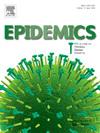Enhanced testing can substantially improve defense against several types of respiratory virus pandemic
IF 2.4
3区 医学
Q2 INFECTIOUS DISEASES
引用次数: 0
Abstract
Mass testing to identify and isolate infected individuals is a promising approach for reducing harm from the next acute respiratory virus pandemic. It offers the prospect of averting hospitalizations and deaths whilst avoiding the need for indiscriminate social distancing measures. To understand scenarios where mass testing might or might not be a viable intervention, here we modeled how effectiveness depends both on characteristics of the pathogen (, time to peak viral load) and on the testing strategy (limit of detection, testing frequency, test turnaround time, adherence). We base time-dependent test sensitivity and time-dependent infectiousness on an underlying viral load trajectory model. We show that given moderately high public adherence, frequent testing can prevent as many transmissions as more costly interventions such as school or business closures. With very high adherence and fast, frequent, and sensitive testing, we show that most respiratory virus pandemics could be controlled with mass testing alone.
加强检测可大大提高对几种呼吸道病毒大流行的防御能力
大规模检测以识别和隔离受感染个体是减少下一次急性呼吸道病毒大流行危害的一种有希望的方法。它提供了避免住院和死亡的前景,同时避免了不加区分地采取社交距离措施的需要。为了了解大规模检测可能是或可能不是一种可行的干预措施的情况,在这里,我们模拟了有效性如何取决于病原体的特征(R0,病毒载量达到峰值的时间)和检测策略(检测极限,检测频率,检测周转时间,依从性)。我们基于一个潜在的病毒载量轨迹模型的时间依赖性测试敏感性和时间依赖性传染性。我们的研究表明,如果公众的依从性适度提高,频繁的检测可以预防与关闭学校或企业等更昂贵的干预措施一样多的传播。通过非常高的依从性和快速、频繁和敏感的检测,我们表明大多数呼吸道病毒大流行可以仅通过大规模检测得到控制。
本文章由计算机程序翻译,如有差异,请以英文原文为准。
求助全文
约1分钟内获得全文
求助全文
来源期刊

Epidemics
INFECTIOUS DISEASES-
CiteScore
6.00
自引率
7.90%
发文量
92
审稿时长
140 days
期刊介绍:
Epidemics publishes papers on infectious disease dynamics in the broadest sense. Its scope covers both within-host dynamics of infectious agents and dynamics at the population level, particularly the interaction between the two. Areas of emphasis include: spread, transmission, persistence, implications and population dynamics of infectious diseases; population and public health as well as policy aspects of control and prevention; dynamics at the individual level; interaction with the environment, ecology and evolution of infectious diseases, as well as population genetics of infectious agents.
 求助内容:
求助内容: 应助结果提醒方式:
应助结果提醒方式:


